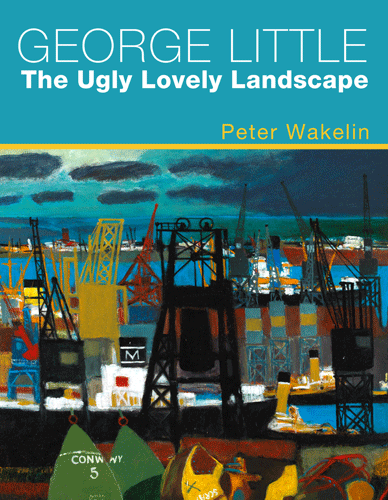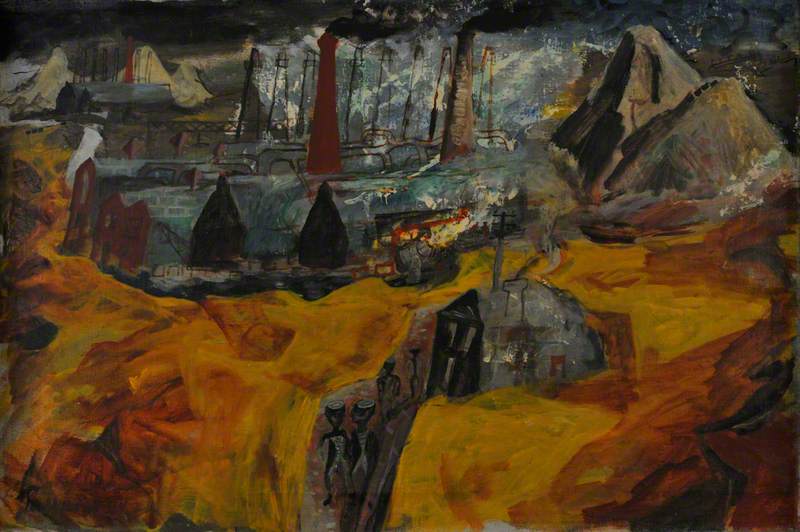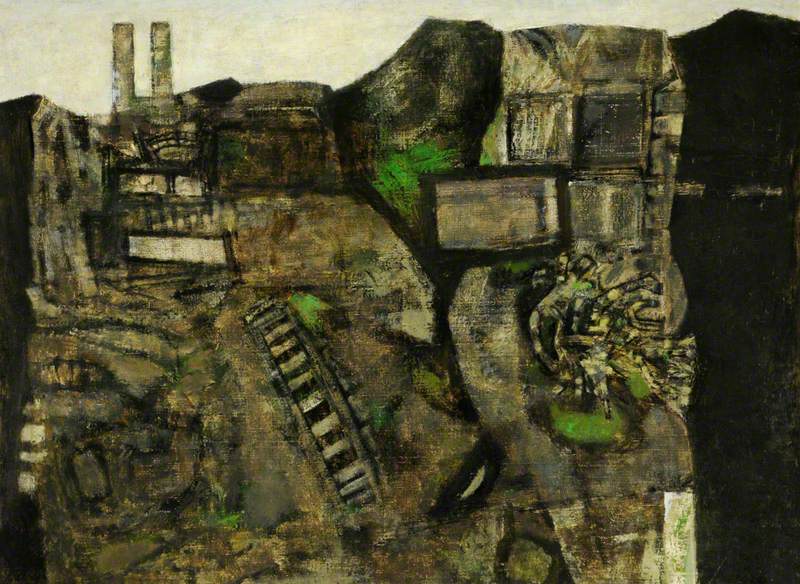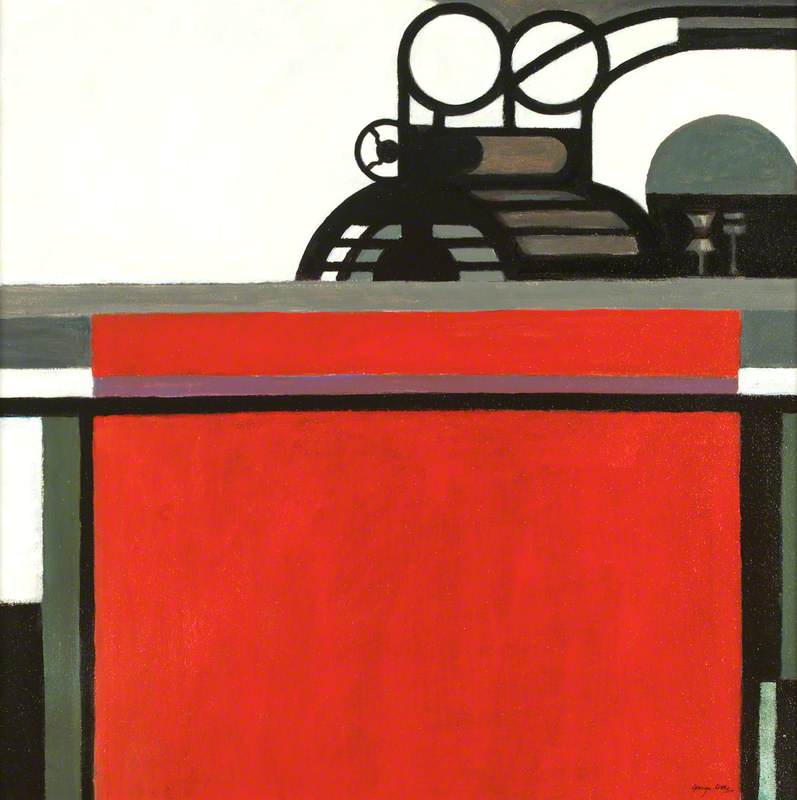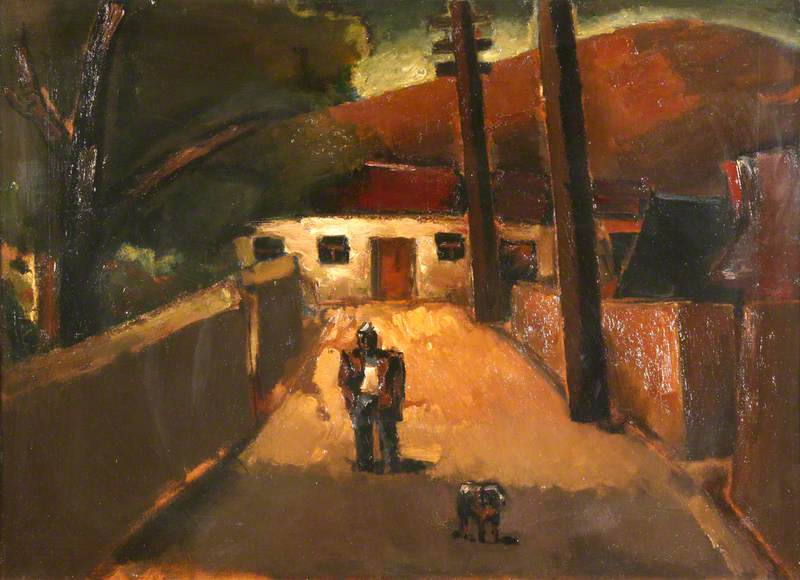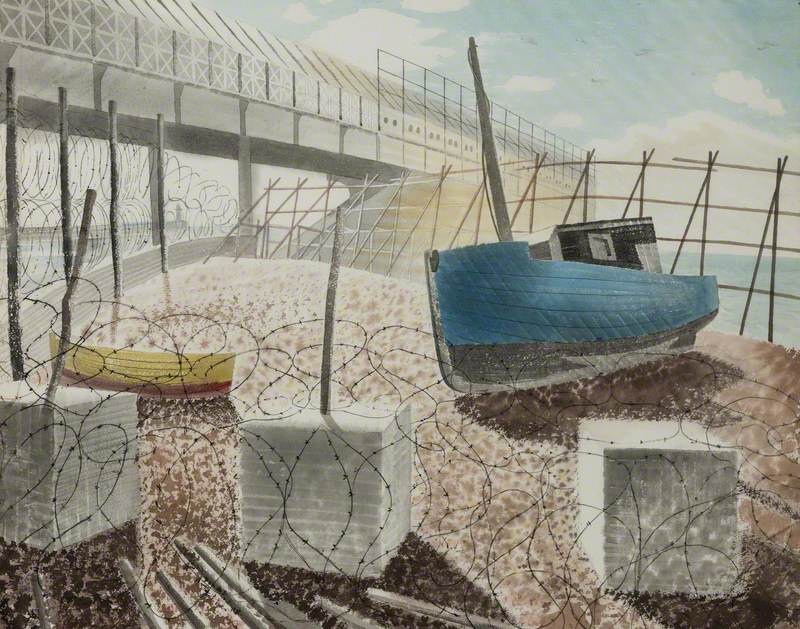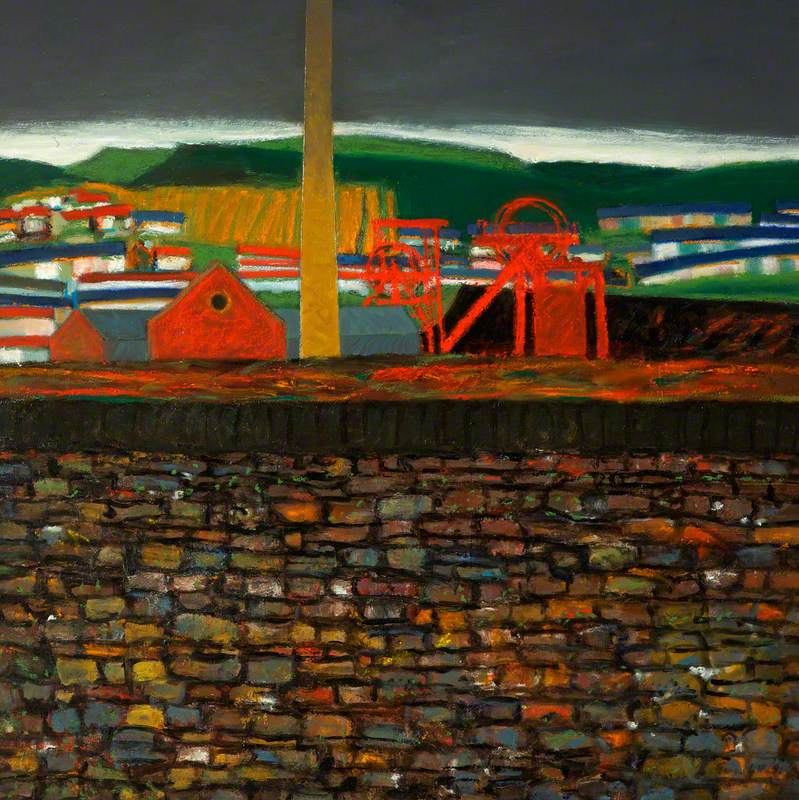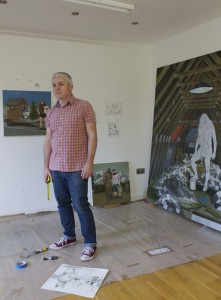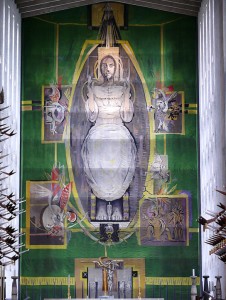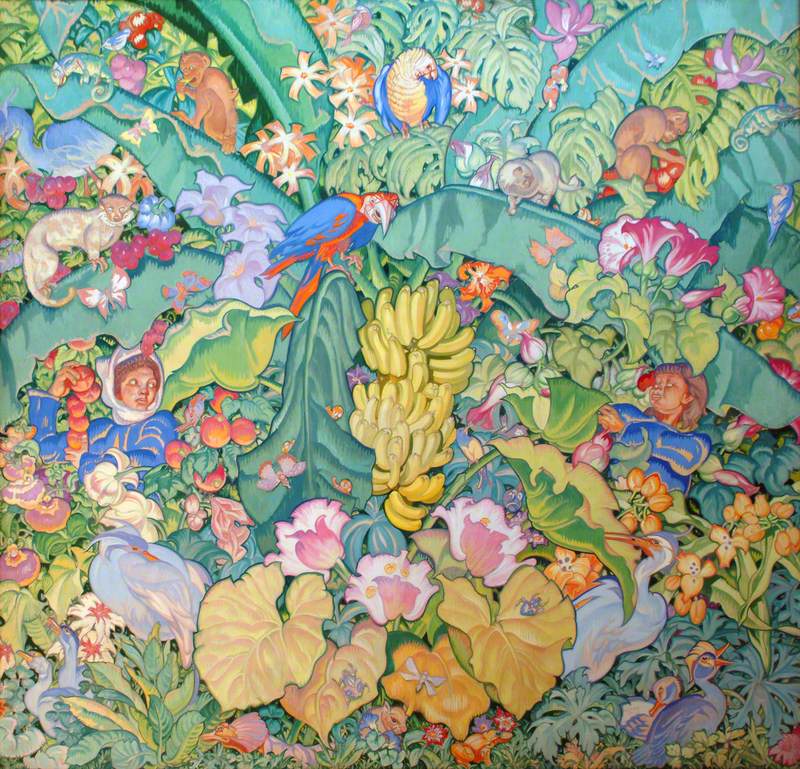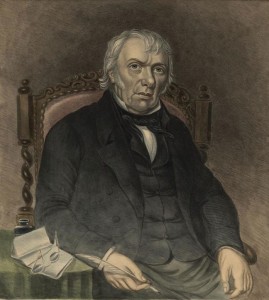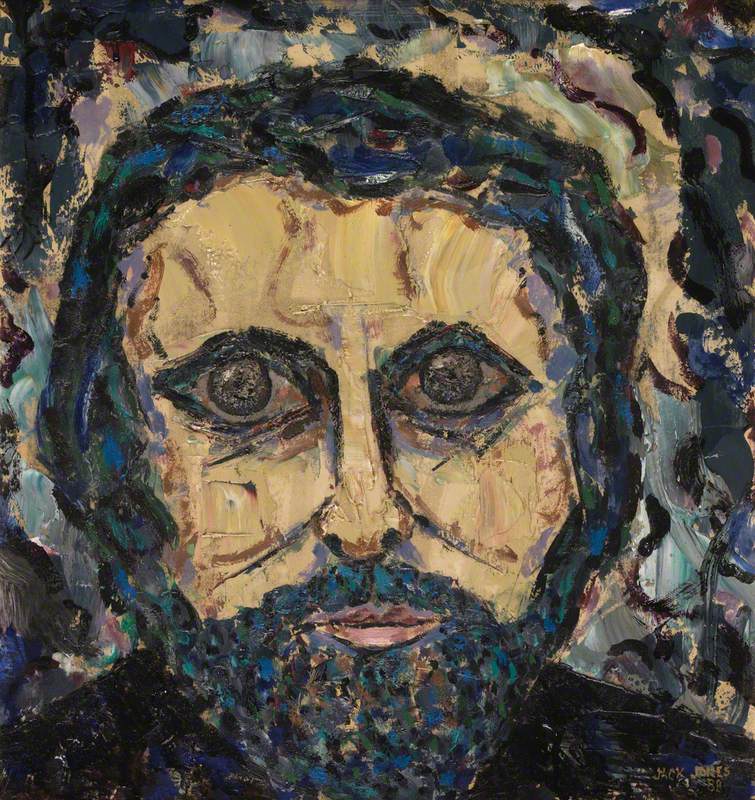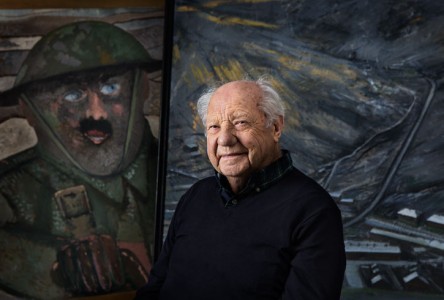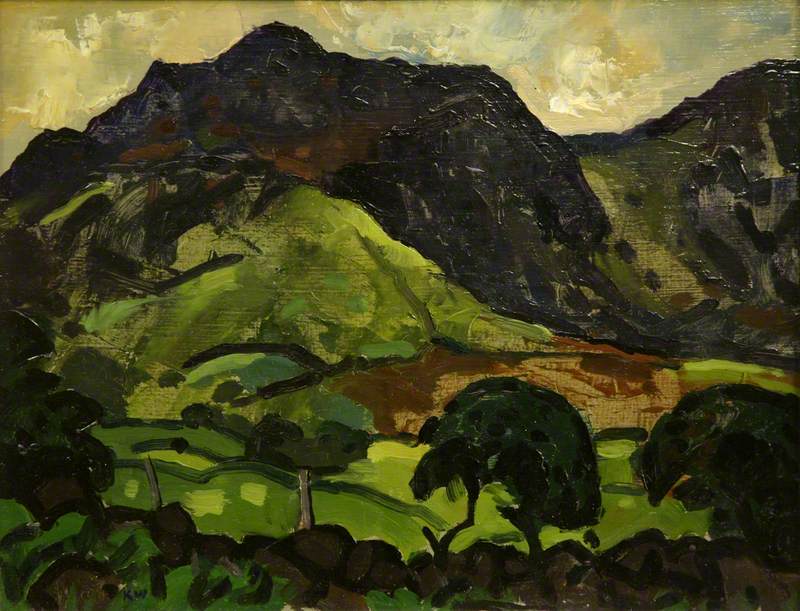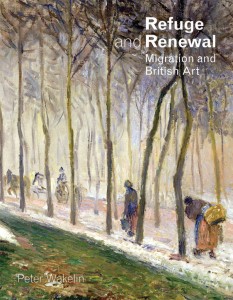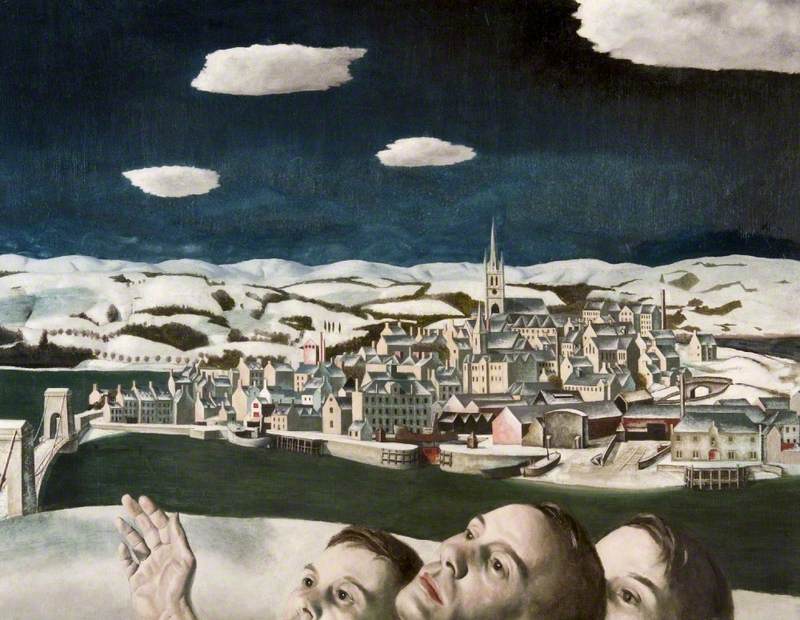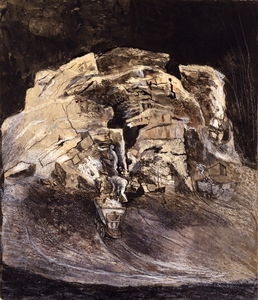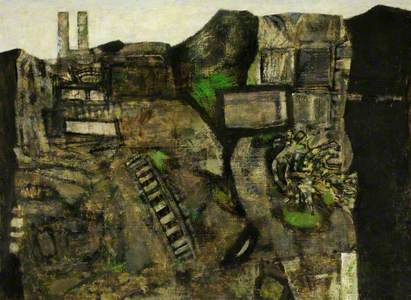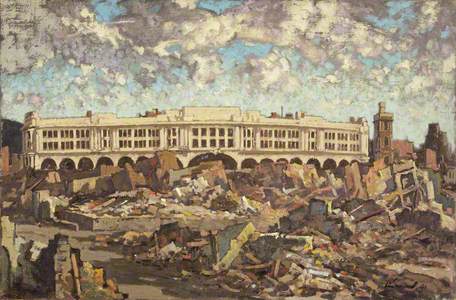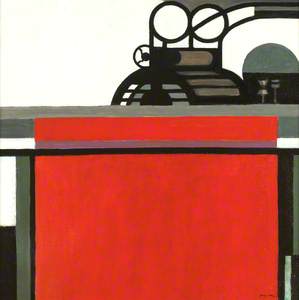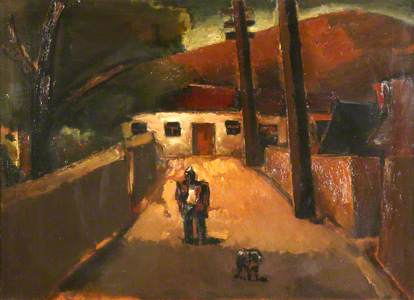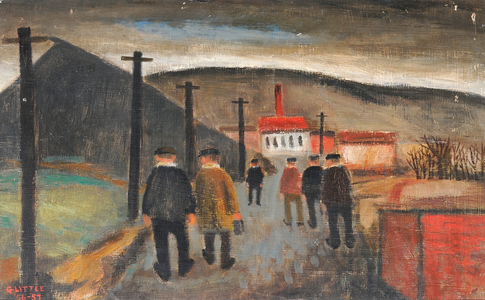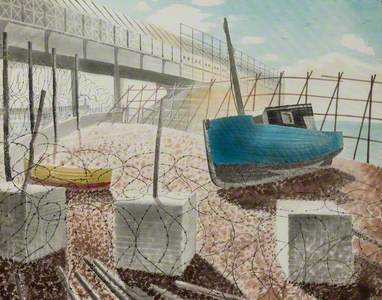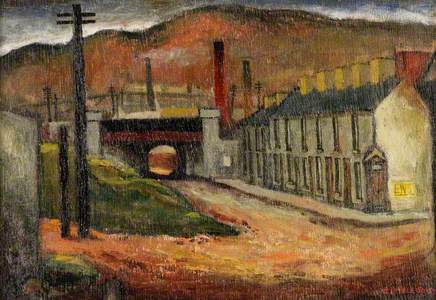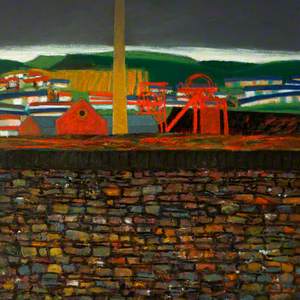Generations of artists have been drawn to industry and to the dereliction that deindustrialisation leaves behind. Working sites have a compelling vigour, visual complexity and mystique; and where industry has ebbed away, it has often left behind a distinctive kind of beauty in the sad grandeur of decay or the miracle of natural regeneration.
The beginning of The End II – Evening
2008, acrylic on board by George Little (1927–2017) 
No artist has been more committed to interpreting industrial and former industrial environments than George Little. Born in the east end of Swansea in 1927, he spent his life exploring the nearby docks, bomb sites, abandoned copper smelters and left-behind streets of what his fellow Swansea citizen Dylan Thomas called his 'ugly, lovely town'. He produced paintings, drawings, collages and photographs of these subjects from the late 1940s up until his death in 2017 and sought parallels in the Valleys of south Wales, Anglesey, South Yorkshire, and as far afield as Berlin and New York.
Sheffield
1958, mixed media on paper by George Little (1927–2017), private collection 
Artistic fascination with ruins goes back to the eighteenth century, when travelling painters sought bare ruined choirs and ivy-clad castles as objects of aesthetic interest and symbols of transitory existence, as when Turner painted the overgrown nave at Tintern Abbey. Artists who had discovered themes in the overwhelming power of waterfalls and mountains recognised similarly 'sublime' qualities in the mines, mills and furnaces of the industrial revolution, which split open the earth, built vast structures or transformed rock to white-hot metal.
In the twentieth century, industry and ruination coalesced as many heavy industrial sectors contracted. The wounds of the Second World War were followed by long processes of deindustrialisation, urban decay and serial renewal. George Little was allied with several artists of the preceding generation who sought to comment on this changing world, among them John Piper in paintings of abandoned houses and burnt-out towns, Julian Trevelyan at the struggling Potteries and Graham Sutherland in wartime responses to tin mines, quarries and steelworks.
Limestone Quarry, Working at the Cliff Face
1943
Graham Vivian Sutherland (1903–1980) 
All these were interested in abstract forms, surreal connotations and expressive colours, and they found apt subjects in industry and dereliction. Little liked to quote the painter Prunella Clough: 'It helps perhaps that so much of the industrial material is already abstract.' He saw in his subjects not just patterns, colours and textures but strange, ambiguous forms, associations and moods.
Interest in the visual legacy of run-down towns and derelict industrial sites still grows. They are backdrops in photoshoots for fashion magazines and album covers, filming locations for thrillers and prime subjects for photographers and painters who hunt the grandeur of decay across the world, from deserted Chernobyl to abandoned car plants in Detroit.
George Little found this material first on his own doorstep. The docks of Swansea in his youth still teemed with rail lines and cargo ships framed by the verticals of coal hoists and cranes. The four miles of valley above the mouth of the River Tawe, once known as 'Copperopolis' and packed with smelting and manufacturing works, was being abandoned site by site.
In that space of valley, the German travel writer Peter Sager noted, 'there were no less than 150 metal-processing works in 1890. Half a century later, this area of 1,200 acres had become the biggest industrial wasteland in the whole of Britain.'
There is much to be learned from George's long project to interpret these legacies. He was never nostalgic about past industry or its effects. He knew the suffering that mining and smelting had brought, and he appreciated that the colours in the slag that so excited him were the poisonous residues of arsenic, copper, iron, tin, lead, zinc, cadmium and nickel. He was glad of reclamation and the return of grass and trees, provided that some reminders of the industrial inheritance remained. He wrote:
'Everywhere the images of my choice are disappearing: pithead wheels, slag heaps, heavy industry, the fishing industry, even the streets of workers' houses, and the Swansea docks as I knew them are virtually no more. The Hafod copperworks are disintegrating and all being tidied up, undoubtedly for the good, but it means that my subject matter is almost a memory.'
Aged 16, he enrolled in Swansea School of Art and after two years' National Service in the RAF he went back to take the National Diploma in Design and the Art Teacher's Diploma, In 1951 he was awarded a bursary for a two-year postgraduate course at the Ruskin School of Fine Art in Oxford.
An early inspiration was the Polish refugee artist Josef Herman who had made his home near the top of the Swansea Valley at Ystradgynlais. Little met him on visits up the valley. His exotic presence as a continental Expressionist excited many young artists in South Wales. The earth colours, realist subject matter and bulky forms of Herman's art would inform his eye for the rest of his life.
Herman's influence was clearest in his paintings of the 1950s, for example in a view towards a colliery near Ystradgynlais with vivid reds, figures of men going to work and emphatic electricity poles. The picture was purchased by the Contemporary Art Society for Wales in 1959.
Another influence was Eric Ravilious, who had been drawn to the strange detritus of humanity. For a time Little tried out Ravilious's starved-brush watercolour technique, but of more settled value was the licence to build paintings around objects and motifs that other artists would pass by: marine propellers, gun emplacements, neglected corners of yards.
Back in Swansea docks, Little painted a 'dirty British coaster with a salt-caked smoke stack' as it took on coal. Just as Ravilious might have done, he emphasised the swoop of the bridge that delivered wagons to the hoist, enjoyed the pattern of the structural members of the tower and breathed a lively personality into the forward-straining vessel.
The Tramp: Coaling, Swansea Docks
c.1950, watercolour on paper by George Little (1927–2017) 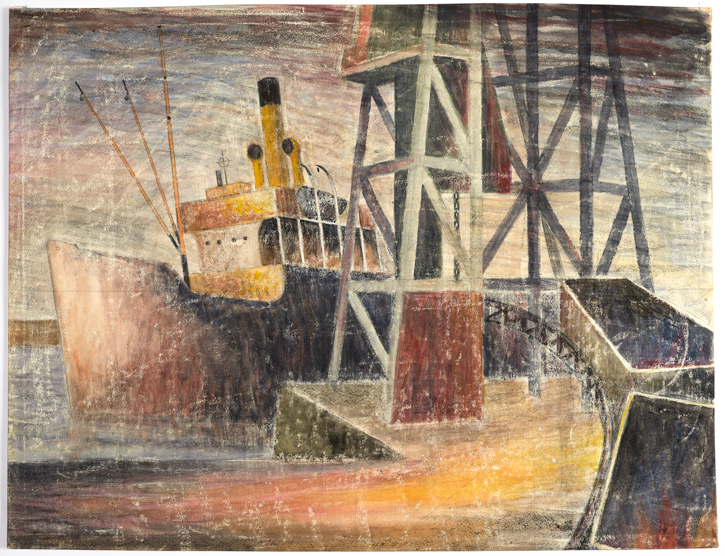
The picture was purchased by the Arts Council and included in the prestigious 'Exhibition of Welsh Painting and Drawing' at the Glynn Vivian Art Gallery in Swansea, alongside works by Frank Brangwyn, Josef Herman, David Jones and Augustus John.
A location that he returned to over several years was Maliphant Street in Hafod: a row of houses soon to be demolished that led down to a bridge on the main line railway. Such works were selected for touring exhibitions: in 1952 for 'Thirty Welsh Paintings of Today' by John Piper and Carel Weight and in 1955 for 'Industrial Britain', during which he was complemented by Ruskin Spear and L. S. Lowry.
Maliphant Street, Hafod, Swansea
(study) 1956–1957
George Little (1927–2017) 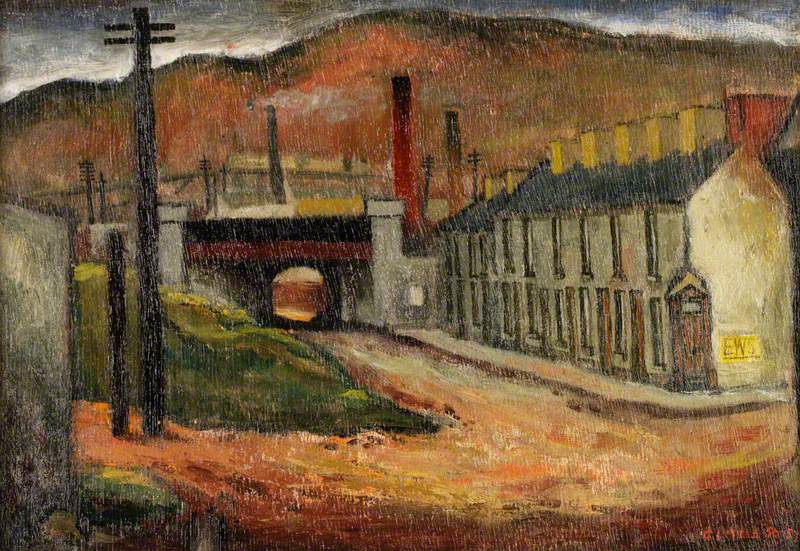
From 1967, he held a full-time lectureship at Swansea University where he led an optional course in art history for undergraduates and created a gallery on the campus. From this time onwards he became even more fascinated by making paintings in and around the docks and the derelict sites of the Lower Swansea Valley.
As a child in a suburb on the hillside east of Swansea, Little grew up with an almost aerial perspective from his bedroom window – a view that he evoked repeatedly in paintings. Swansea Docks Remembered No, 1 combined all the motifs that meant most to him in vivid, life-affirming colour. It is a dramatic landscape under a blue horizon rimming the green bay, clouds gathering from the west and scudding away to east.
Swansea Docks Remembered No. 1
1992–1993
George Little (1927–2017) 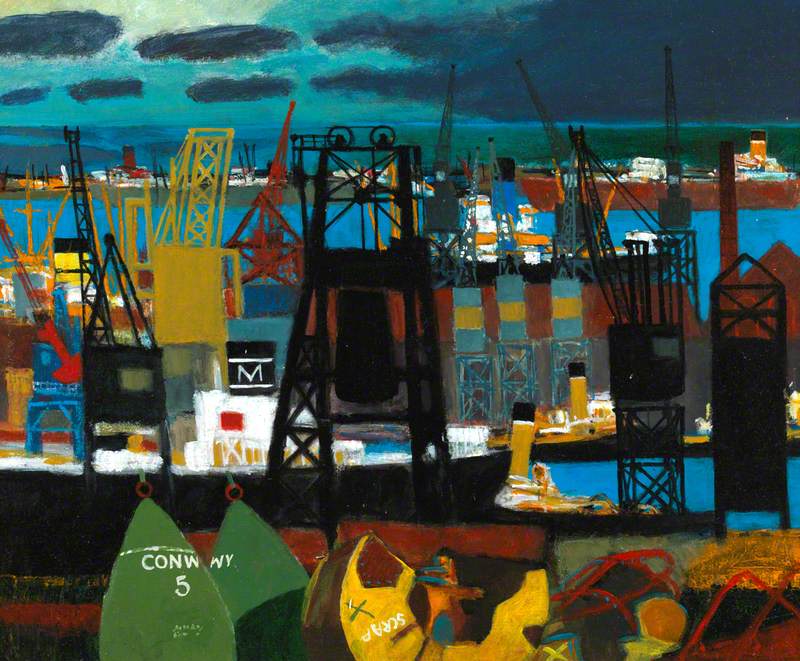
The visual details take some untangling. Two ships lie on the far side of the bluer Queen's Dock and another, black-hulled, is moored on the near side. A coal hoist on the inland side of King's Dock rises through the middle of the picture with a smaller sibling at far right. A few red-brick buildings occupy the ground between the docks, notably an engine house with a gabled front and chimney.
A host of colour-coded cranes populate the docklands: black, yellow, blue, red, green and grey-and-yellow striped. In the nearer dock are tugs with sloping funnels and a ship marked with an 'M'. In the foreground, shipping buoys are stored with piles of scrap.
On visits to the centre of the coalfield, Little painted Lewis Merthyr Colliery at Trehafod, one of the finest Victorian pits, redeveloped by W. T. Lewis in the 1880s with giant headframes of red wrought iron.
In one painting of the pit, he acknowledged the greener landscape of the reclaimed valley background, but half his composition was the sandstone wall around the colliery, seemingly dark and oppressive yet sparkling with varied colour when he looked more closely.
Despite the grimness of his subject, the colours he could see in it were a fascination. His paintings became abstract celebrations of colour as well as depictions of extraordinary environments. Tunnels into the retaining walls behind an ironworks became black circles, the ground reddened by extreme heat became pink ribbons; twisted steel girders became curving accents in his compositions.
Ystalyfera Ironworks – Pink & Orange
2013, mixed media on paper by George Little (1927–2017), private collection 
George Little liked to say that all his work was 'based on facts' he found in his environment. But he transformed those facts of colour, form and texture, bringing his own response to bear on them. He found both pity and dignity in his subjects, whether the docks when they were busy or the later detritus of quays abandoned to weeds and rust, polluted waste tips, half-ruined works or the run-down streets of workers' settlements due for demolition. His compositions brought redemption where it might be least expected.
Peter Wakelin, writer and curator
George Little: The Ugly Lovely Landscape by Peter Wakelin is published by Parthian
George Little: The Ugly Lovely Landscape
by Peter Wakelin, published by Parthian (2023) 